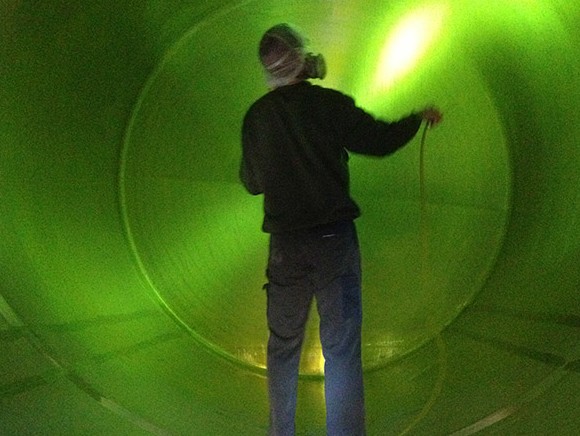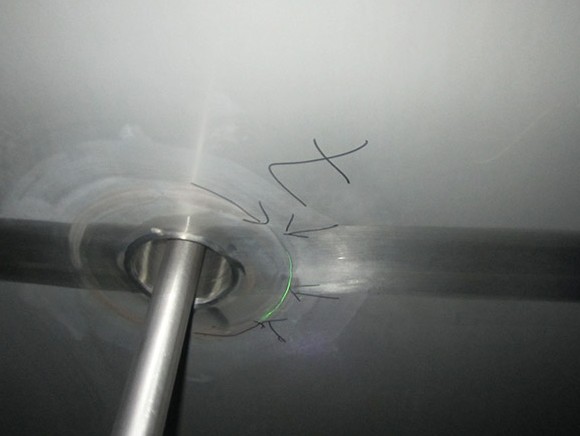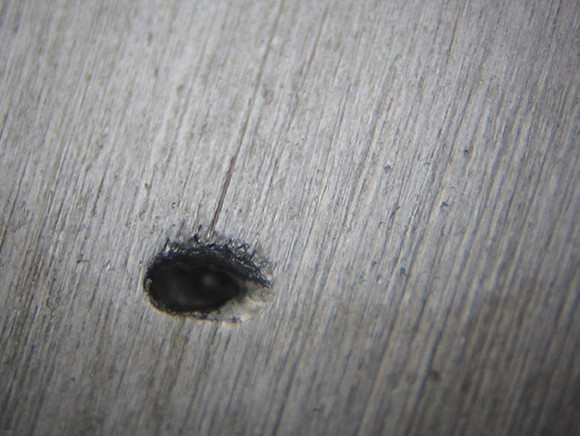
Stainless steel, predominantly austenitic steel, is widely used in the food and beverage industry in equipment used for processing, storage, and transportation of products, because it is easy to clean and has a high corrosion resistance.
Stainless steel looks the ideal material for the manufacturing of equipment for safe product manufacturing. However this very much related to the technical condition of the steel. Bad engineering, bad construction and lack of maintenance during the life time of the equipment, can lead to the formation of nesting places for micro-organisms, out of reach for the (CIP) cleaning. These spots are ideal locations for biofilm.
In the early days of HACCP it was recognised the technical condition of equipment should also be a CCP. However nut every technical and quality manager share this awareness. By identifying the technical condition as CCP, the this gets the right awareness, straight from engineering, validation and regular attention by inspections and during live cycle.
Stainless steel is generally very resistant to corrosion due to an ultra-thin layer of chromium oxide that is only a few nanometres thick. Corrosion may occur due to complicated reactions resulting in a gradual degradation of the metal (Jessen, 2011). Another type of corrosion known as pitting corrosion, occurs if chemical or mechanical damage of the layer of oxides has taking place. This results in fast galvanic corrosion, which accelerates especially if the surface is exposed to chloride ions in the cleaning water (Parrott & Pitts, 2011). Heat-affected zones of the steel, such as weldings are often sensitive to this corrosion, especially if they have a rough surface finish.
stored energy in the steel (Parrott & Pitts, 2011). This can be tensile stress caused by small variations in the thickness of stainless steel plates and residual tensile stress caused by welding, grinding, and bending deformation of the steel plates during fabrication.
It is important to regular inspect the equipment on the occurrence of mechanical defects. Inspections can be imbedded in the HACCP program. If defects are identified, a root cause analyses is recommended. By this it might be possible to limit further growth and to stop the formation of new defects. It’s also recommended to pay attention to remove / repair the defects for example by polishing or welding. If defects exist, they can easily grow bigger, give more bigger and are more difficult to repair.
Especially in the food industry, the equipment is regular hot cleaned. Temperature variations during cleaning will often promote release of stress forces on the defects. Other stress forces common in the food industry are vibrations, hydrostatic forces by a full tank of liquids and hammering in spry dryers. All these forces will finally lead to cracking of the material. These cracks causing bigger microbial nesting places, leaks etc. etc. Part of HAAC regular inspections are also recommended to detect and repair cracks. The sooner cracks are identified and repaired by welding, the longer the weld will last. Table (1) shows an example of an inspection planning of equipment like silo tanks, evaporators, packing lines, dryers.

A number of methods are available for monitoring corrosion and crack formation in tanks for example UV dye penetrant testing and testing based on Eddy Current, Magnetic Flux Leakage, Ultrasonic and visual by robots and or drones
The simplest and most effective non-destructive method for detecting cracks and pores in tanks is the UV dye penetrant method, which is a inspection technique often used in the food industry. The main steps of the procedure involve pre-cleaning of the test surface, spraying the surface with a UV dye penetrant that bind to damaged areas and penetrate into cracks and pores, inspection with ultraviolet light (Figure 8), registration of defects by microscope camera and finally cleaning of the tested surface.
Several organizations describe the method e.g. the International Organization for Standardization (2013). The main advantage of the dye penetrant testing method is that inspection covers 100% of even large areas rapid, it is a method with high sensitivity of even the smallest cracks, and the result that is seen directly on the tested material provides a visual presentation of the defect. Classification of the identified defects is subjective and depends on the trained inspector, but it is possible to supplement the classification with an objective measurement of the depth of the damage by a hand-held electronic devise based on, for example, Alternating Current Potential Drop (Sposito, 2009).
Measurements based on Eddy Current and Ultrasonic principles are more complicated and need sophisticated and expensive measuring equipment. None of these methods is especially suitable for inspection of large surfaces and the interpretation of the results is not obvious and requires substantial training and experience. Parrott & Pitts (2011) found that Eddy Current testing, using standard or even purpose-designed probes has limited penetration of a stainless steel wall and it is also very sensitive to surface imperfections that are very difficult to distinguish from cracks. They found ultrasonic testing more promising but the procedure requires several complimentary scans with different probes so it is a time consuming method. In a study carried out for the Health and Safety Executive, which is a crown non-departmental public body in the United Kingdom, Parrott & Pitts (2011) stated that penetrant testing is the most effective method for non-destruction testing for cracks in reactors in the chemical processing and petrochemical industries, without doubt, this statement is valid also for the food industry. Robot and or drone techniques seems to gain popularity, however the technique is so far only capable to defect large spacing holes and cracks. 100% coverage is also not possible.

Bactoforce is a leading European companies dedicated to the inspection of equipment and detailed reporting of the defects in the food and pharma industry such as tanks, dryers. Bactoforce is calling their inspection an integrity test. Because their focus is on finding all mechanical defects including insufficient cleaning at the entire inner surface of the equipment. For this teat, Bactoforce is using the combination of the 100% surface dye penetrant test + UV-A light for surface biofilm detection and visible inspection for foreign objects, defect gassgets and residues. For large and high objects such as tanks, rope access technique is used for a safe entry, evacuation and facilitation of the welding repair. Bactoforce has almoast 25 years experience. Nowadays in Europe, the number of yearly inspected items exceeds the 10.000.
Source: © Bactoforce